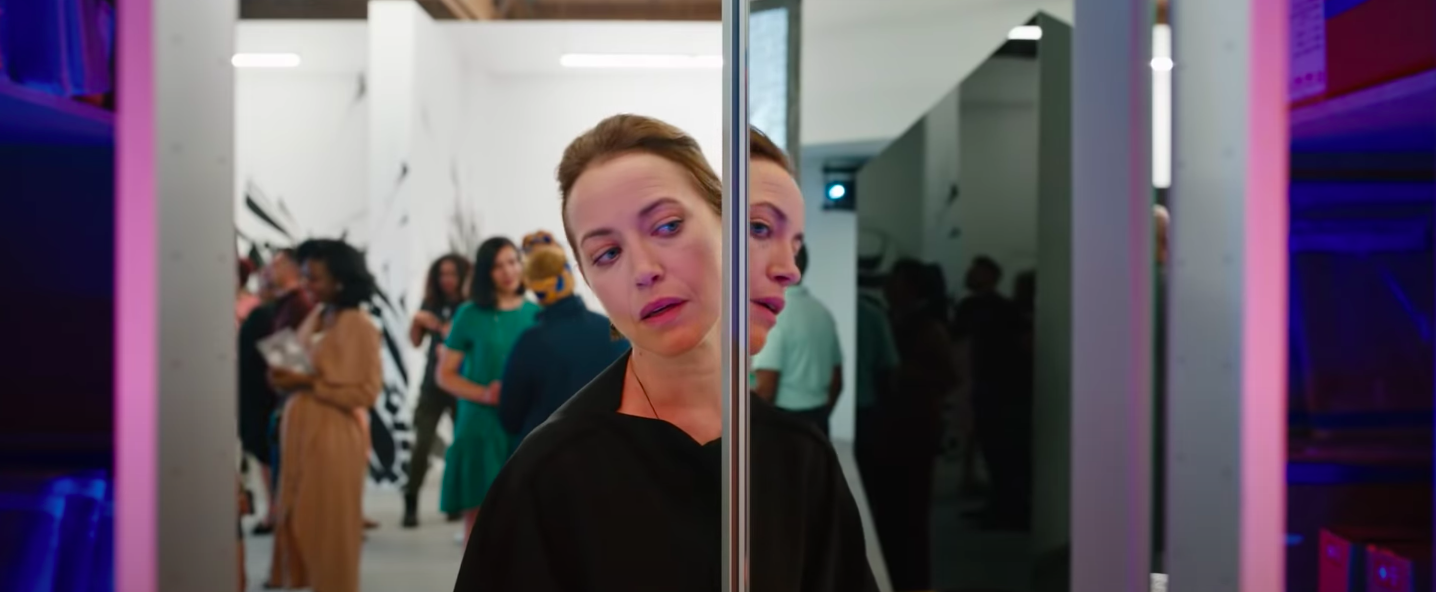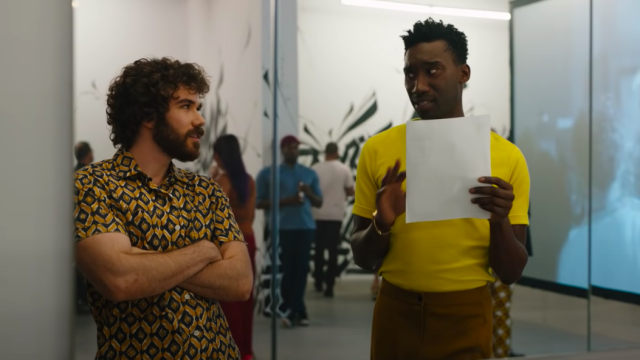In director Nia DaCosta’s Candyman, a new generation of Chicagoans finds themselves in a gentrified Cabrini-Green that bears little resemblance to the neighbourhood in Bernard Rose’s 1992 film of the same name — which is still being terrorised by the titular hook-handed, vengeful spirit. Most everyone knows (on some level) that to speak the ghoul’s name into a mirror five times is to court a gruesome death, and yet even as people in the new movie start turning up mysteriously dead, others can’t resist the temptation to find out for themselves whether the urban legend is real.

In the days since Candyman’s premiere at the top of the box office, the movie’s received a certain degree of praise for its inclusion of a queer, interracial couple that ends up surviving to the end credits rather than being killed off or brutalised the way queer people have often been throughout horror. While it’s always interesting when big-budget projects like this make sure to remind audiences that queer folks exist, Candyman’s representation is something worth reading more deeply into, particularly considering the social commentary woven into the franchise’s core premise.
Though DaCosta’s film mainly focuses on gallery director Brianna Cartwright (Teyonah Parris) and her artist boyfriend Anthony McCoy (Yahya Abdul-Mateen II), the film also features a number of supporting characters who get caught up in the latest wave of terror, like Brianna’s brother Tony (Nathan Stewart-Jarrett) and his boyfriend Grady Greenberg (Kyle Kaminsky).
Like its predecessors, DaCosta’s Candyman tells the story of how the ghost of a Black man who was murdered for having a relationship with a white woman manifests in modern-day Chicago, and murders innocent people there out of a twisted desire to keep his legacy alive. The devastating violence the Candyman inflicts is, in a very explicit way, the films’ commentary on how the painful trauma of anti-Black racism reverberates through time and ends up actively harming people in the present who have an incomplete understanding of the past.
Unlike the first Candyman, which was told from the perspective of a white woman who unwittingly became the scion of the same darkness she was trying to understand, DaCosta’s film focuses mostly on the lives of Black people like Brianna and Anthony. One of the most promising things about the new story is how, simply by being a film about Black people that also stars Black actors, it was primed to revisit this story with more nuance about how they contend with the insidiousness of racism.
The film certainly does that to a point with Anthony and Brianna’s arcs, but the same isn’t nearly as true for Tony and Grady, who appear in a handful of scenes to playfully quip about the string of murders that has the city on edge.

In a movie about an aggrieved ghost who was murdered for his own interracial relationship, Tony and Grady immediately stand out in Candyman as the creative team’s way of weaving in a touch of the original movie for narrative symmetry that’s ripe with potential. In his various appearances, the Candyman’s stalked people he has direct familial connections with, but also those whose lives in some way mirror elements of his own — as is with the case with Anthony.
It’s not hard to imagine a scenario in which, despite their both being men, the Candyman might see some of his own tragedy in Tony and Grady’s relationship — not necessarily because of any issues between them, but because of how hatred of interracial couplings were what lead to his demise. Instead, Tony and Grady really only exist around the periphery, and the movie spends little time giving them anything to do other than flirt with one another as if people around them aren’t dropping dead.
Grady and Tony aren’t unaware of the otherworldly strangeness pervading Cabrini-Green, but they move through Candyman with a subtextual assurance of their safety that feels at odds with the story’s other characters. The queer couple is no more thinly characterised than any of the other supporting players, but because their charmed relationship is the entire crux of their on-screen presence, it feels almost as if it’s being held up as a shield that protects them from harm. Though this vibe goes uncommented in the text of the film, it becomes increasingly apparent whenever Tony snips at Grady, who at one point considers calling on the Candyman.
In response, Tony explicitly states his opinion that Black people don’t need to be summoning that kind of stuff into their lives. It’s one of the few moments in the film where it feels like you’re seeing a flash of real people rather than a picture-perfect interracial couple crafted with the white gaze in mind.
Beyond the default presumption of the audience’s whiteness, the white gaze can take a variety of forms in media like situating white people within narratives that shouldn’t necessarily be about them (see: La La Land), or watering down ugly realities about racism out of a seeming desire to make white people feel better about themselves (see: The Falcon and the Winter Soldier). What these different forms all have in common is how they cater to white audiences in ways that don’t quite gel with the messages being presented. In Tony and Grady’s case, both of those forms of the white gaze feel present.

In the past few years, other horror projects like It: Chapter II, Lovecraft Country, and the Fear Street trilogy have all spotlighted queer characters to varying degrees of success. From these films, there’s been a renewed wave of conversations about how the horror genre has failed queer audiences in the past and what new projects can do to better the genre’s track record for representation. A very important — but necessary — component of these conversations has been what responsibility horror creatives have to tell stories that better reflect the audiences, but also how they can go about creating these stories while navigating harmful tropes.
Both It: Chapter II and Lovecraft Country were met with similar kinds of criticism for their respective depictions of violence directed at queer people, and to some extent, it feels as if Candyman wanted to avoid any potential for that sort of blowback with Grady and Tony. What often gets lost in these discussions is how movies like Candyman have the unenviable task of grappling with the larger canon’s paucity of solid queer representation.
Audiences expect queer characters to be unceremoniously killed only because it’s happened so often, but when a film tries to course-correct by leaving its gays unscathed, it’s also hard not to see them as being treated with Pride™ edition kid gloves.
Tony was quite right that Black people don’t need to be manifesting killer ghosts into their lives, but it’s also true that queer people should be every bit as terrified as their heterosexual peers when there’s a homicidal spirit on the loose. Threading needles like this has been and will continue to be tricky, as progress often is, but fear of missteps shouldn’t scare creators away from making bolder decisions or keep audiences from asking for something more.
Candyman is now in theatres.
